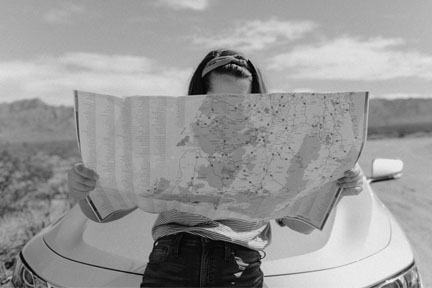
Charting your course by unfolding a large map.
Today, almost everyone has a cell phone and on that device, or their computer, we can map out our journey to anywhere in a few clicks. With a GPS in the car, or a maps app on the phone, a voice call tells us exactly where to go, and adapts our course in an instant should we take a wrong turn.
The Dickies From Gunton: Canadian Brothers in Two World Wars weren’t waiting to be told where to go. They had figured it out. The boys had their maps, paper to-scale drawings of the area including the various routes between locations. Often, they would refer to a map of the entire province of Manitoba to chart their travels.
Percy and Earl would carefully unfold the large creased paper and lay it out before them to consider their potential routes, tracing them out with their fingers. If they traveled outside the province, they would also refer to the next provincial map. For example, when they would go to visit family in Saskatchewan, they would track their journey to the end of the Manitoba map and continue it on the Saskatchewan map.
Sometimes the map would be out of date, missing key information. Sometimes they would get to a place in their travels that would require a detour and so, again, they would look to the map for alternatives. Or if they got lost, they would determine where they were and how they would now get to where they were going.
And if their car broke down and they couldn’t fix it, or they were going to be horribly late to meet up with others, they couldn’t just search for a local garage or call or text a friend or family member from their own cell phone. They would never have even imagined this possibility.
In their adult years, as more and more people and businesses had telephones, the phone was also an option. But it was what we call the landline. They might stop at a gas station and ask to use their phone, probably for a local call only because long distance calls were very expensive. Or they might stop at a phone booth, a public phone. There, they would search the local phone books, fat printed directories of names and numbers of people and businesses from the area, to find the right number to call. And then, they would place their call to that number, inserting coins to pay the cost of the call.
Today, they would be surprised to see how few pay phones remain and how difficult it would be to find a phone book. They’d also be unlikely to get an operator on the line to help them, as everything is now digital.
And even if they were to get mobile phones, they probably would not like being told where to go.
